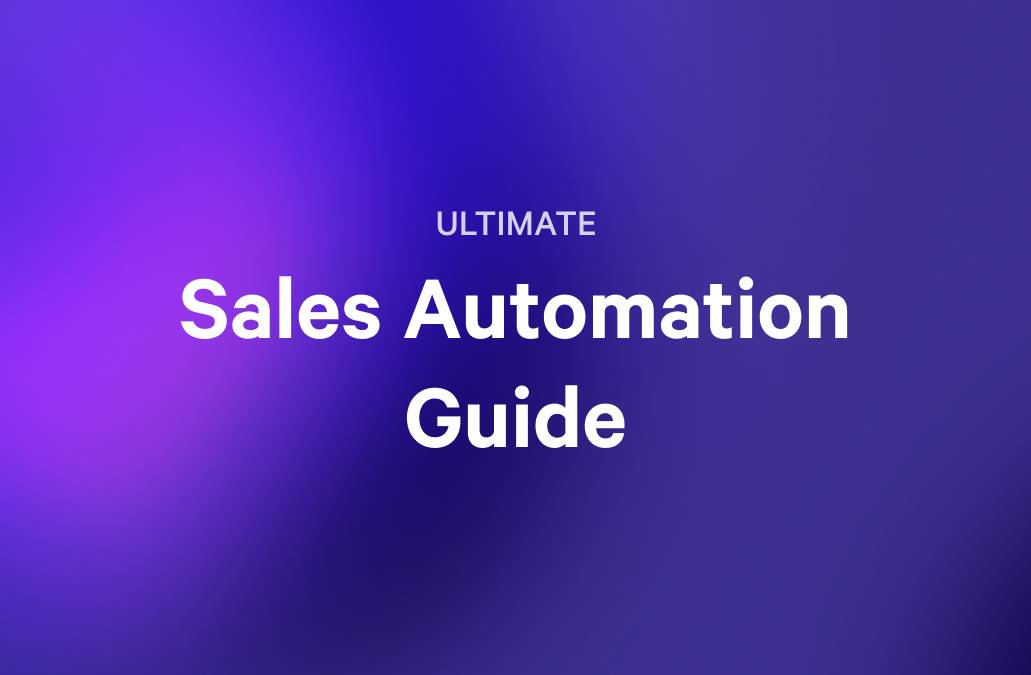Marginal gains make all the difference when you're really close to hitting your quota.
If you're getting close and starting to feel the pull of ads for new tools and other strategies, you might be looking to understand the impact they make on your sales process.
This is where understanding incremental sales becomes crucial.
Incremental sales, or, the additional revenue generated from specific sales activities and strategies, can help provide a clear picture of what's driving your sales forward and where (and why) those gains are being made.
In this article, we'll explore the concept of incremental sales and provide practical methods for calculating and boosting these vital figures for you and your business.
Key Takeaways
Before we delve deeper, here are the essential points you'll gather from this article:
- Understanding Incremental Sales: What it is and how it differs from total sales.
- Benefits Explored: Discover the substantial benefits of measuring incremental sales.
- Practical Calculations: Learn the formula to calculate incremental sales and see it applied through a practical example.
- Best Practices: Uncover top practices to boost your incremental sales, enhancing both sales enablement and overall sales velocity.
What is incremental sales?
Incremental sales is the additional revenue generated from specific changes or improvements in your sales strategy. For example, adding a new marketing campaign or making some changes to your pricing strategy within a specified time period.
Understanding and measuring the impact of these activities is vital for any organization looking to improve sales performance. It helps pinpoint which changes are actually making a difference.
By closely monitoring incremental sales, companies can make data-driven decisions that amplify their sales outcomes and ensure sustainable growth.
Incremental sales vs. total sales
Incremental sales are the extra revenue you get from specific changes in your sales approach. Total sales, on the other hand, includes all the money your business makes from any source.
Knowing the difference between your total sales and the incremental sales you pick up from making changes to your sales strategy helps you identify what’s working and improve your sales strategy for better results.
The benefits of measuring incremental sales
The most obvious benefit of tracking your incremental sales is that it allows you to identify which specific actions or changes are driving the most impact, enabling a more refined and effective sales methodology.
This precision is especially valuable in B2B lead generation, where understanding what works can directly influence the quality and quantity of leads.
By focusing on the tactics that generate the most incremental sales, you not only shorten the sales cycle, you improve the efficiency of your sales team.
In addition to changes at the additional sales rep level, measuring incremental sales across the entire sales team helps sales leaders allocate resources more strategically, ensuring efforts are focused where their impact is felt the most.
Incremental sales calculation: The formula
To accurately measure the impact of your sales initiatives, you need a solid formula for calculating incremental sales. The basic formula is:
Incremental Sales = Total Sales - Baseline Sales
- Total Sales: This is the total revenue generated after implementing a specific sales promotion, strategy, or tool.
- Baseline Sales: The average sales level before the initiative, and excluding any other promotional efforts, serving as a benchmark.
By isolating the revenue directly tied to your initiatives, you get a clear picture of the true impact on your sales performance. It’s a powerful way to evaluate the effectiveness of new strategies, tools, or campaigns and make data-driven decisions that enhance your sales velocity.
The incremental sales formula in action
Let’s say you’re a SaaS company looking to boost sales. Your marketing team comes up with a fantastic influencer marketing campaign — working with tech wizards to promote the benefits of your SaaS on their socials. Before the campaign, you’d need to determine your baseline sales by taking into account historical sales data and seasonal trends — it’s very important that this data excludes any other promotions and campaigns.
If your customer acquisition revenue is at $130,000 after the campaign, and your historical data shows that it would’ve been $100,000 without the campaign, then your incremental sales are $30,000.
$130,000 - $100,000 = $30,000
In this example, your promotional campaign generated an increase of $30,000, giving you a clear indication of the campaign's success.
What is the incremental sales cost?
This cost refers to any additional expenses directly associated with generating incremental sales, such as costs related to new marketing activity, sales incentives, or additional sales resources. By comparing these costs against the increase in revenue, you can determine the profitability of your initiatives.
What is incremental sales lift?
The lift is the percentage increase in sales that can be directly attributed to a specific action or strategy. It is a key metric for understanding the effectiveness of your sales initiatives and evaluating the ROI of your efforts.
Incremental sales best practices
Luckily, there are a few pointers that can make all the difference. Here are eight simple tips to help you boost your results and make the most of your efforts
1. Focus on buyer engagement
One of the most effective ways to boost incremental revenue is by increasing your buyer engagement. This means creating personalized experiences that resonate with your target audience. Leverage data-driven insights to tailor your messaging, offers, and interactions, ensuring that all promotional activity and each touchpoint adds genuine value to the buyer's journey.
Engaged buyers are more likely to convert, resulting in extra sales.
2. Optimize your sales pipeline
A well-managed sales pipeline is key to identifying opportunities for additional revenue. You should regularly review and refine your pipeline stages to ensure smooth transitions (and minimal drop-offs). This helps you pinpoint where prospects are most likely to convert, so you can focus your efforts on moving them through the pipeline efficiently—ultimately improving your sales performance.
3. Use the best sales tools
Whether it's CRM software, sales analytics platforms, or communication tools, ensure your tech stack is set up to prepare your team for success. The best sales tools not only boost productivity but they’ll also help you track and measure your incremental sales figures more effectively.
4. Stay ahead of B2B marketing trends
Keeping up with B2B marketing trends is essential for staying competitive and identifying new avenues for incremental sales. Whether it’s the latest in content marketing, ABM strategies, or AI-driven campaigns, staying informed allows you to adapt and innovate with marketing techniques that are both relevant and effective. Any additional marketing efforts that can be aligned with sales may be a key factor in picking up some incremental sales (but don't take our word for it, let your data speak for itself).
5. Implement the best proposal software

While proposal software does fall under the category of sales tools, we'd be remiss not to dive deeper into the impact that proposal software can have on your ability to generate additional revenue from your sales efforts.
High-quality proposals can be a game-changer for closing deals and bringing in those additional dollars. The best proposal software enables you to create professional, customized proposals quickly, ensuring you can respond to opportunities with precision and speed.
This not only improves your chances of winning new business, it also enhances the overall buyer experience. Another consideration here is the insights into customer behavior sellers can glean from the analytics in their proposal software.
Learning more about what the customer base is looking at, when they're opening documents and what they're agreeing to can help everyone further their business goals. The sellers can't sell more effectively, and the buyers are getting additional products or support to enable their success.
6. Monitor sales enablement KPIs
Tracking sales enablement KPIs is crucial for understanding the effectiveness of your incremental sales strategies. Key performance indicators like content usage, training effectiveness, and time-to-close provide valuable insights into how well your sales team is utilizing resources so you can make informed adjustments to your sales enablement efforts.
7. Align your sales tech stack
Your sales tech stack should be fully aligned to support your goals. This means integrating your CRM, marketing automation, analytics tools, and communication platforms to create a seamless flow of data and insights. When your tools work together harmoniously, it’s easier to identify opportunities and then execute them with precision.
8. Foster a culture of continuous improvement
Incremental sales are driven by a commitment to continuous improvement. Encourage your sales professionals to regularly review their processes, seek feedback, and experiment with new strategies. By fostering a culture that values learning and innovation, you create an environment where incremental sales growth can thrive and success can be sustained.
Final Thoughts
Understanding and optimizing incremental sales isn’t just a strategy—it’s a mindset. It’s about seeing the small changes that lead to big outcomes and embracing what makes those changes possible.
Qwilr helps you craft proposals that not only impress but convert, giving you the precious edge you need.
Ready to take your sales to the next level? Every journey starts with the first step.
Try Qwilr for free today and take yours.
About the author

Marissa Taffer|Founder & President of M. Taffer Consulting
Marissa Taffer is the Founder & President of M. Taffer Consulting. She brings over 15 years of sales and marketing experience across various industries to a broad range of clients.


